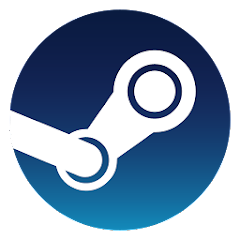ADVERTORIAL
What is Steam?
• Digital Distribution Platform: A service for purchasing and downloading video games directly to your computer.
• Community Hub: Offers forums, user reviews, and community features for gamers to connect.
• Game Library Management: Provides tools for organizing and managing a user's game collection.
• Cross-Platform Support: Compatible with Windows, macOS, and Linux operating systems.
• Regular Sales and Discounts: Features seasonal sales events with significant discounts on various games.
Features of Steam
• Vast Game Library: Access to thousands of games across multiple genres, including indie titles and major releases.
• Steam Workshop: A platform for user-generated content, allowing players to create and share mods for various games.
• Cloud Saves: Automatically saves game progress in the cloud, enabling users to access their games from any device.
• Big Picture Mode: An interface designed for television screens, allowing for a console-like experience using a controller.
• In-Game Overlay: Features chat, notifications, and game guides while playing, enhancing the gaming experience.
• Steam Community Market: A marketplace for buying and selling in-game items and trading cards.
• Achievements and Trading Cards: Gamers can earn achievements and collect virtual trading cards for additional rewards.
• Remote Play: Allows users to play games on their mobile devices or stream them to other computers.
Pros and Cons of Steam
Pros
• Extensive Game Selection: Offers a vast library of games, catering to all types of gamers.
• Frequent Sales: Regular discounts and sales events make it possible to purchase games at reduced prices.
• Active Community: A large user base and community features foster connections among gamers.
• Easy Installation and Updates: Streamlined processes for installing games and managing updates make it user-friendly.
• Mod Support: The Steam Workshop allows players to enhance their gaming experience through mods created by the community.
Cons
• Region Restrictions: Some games may have geographic restrictions, limiting availability based on the user's location.
• Internet Dependency: Requires a stable internet connection for installation and updates, which can be a drawback for users with limited access.
• Account Security Risks: Users need to be cautious of phishing scams and account hacking attempts.
• Large File Sizes: Some games require significant storage space, which can be problematic for users with limited hard drive capacity.
• Performance Issues: Occasionally, users may experience performance problems or bugs with specific games or updates.
Functions of Steam
• Game Purchasing: Allows users to buy and download games directly to their devices.
• Library Management: Organizes a user's game collection and provides quick access to games.
• Social Features: Enables friends lists, chat, and community interactions within the platform.
• Game Updates: Automatically updates games to the latest versions, ensuring optimal performance and features.
• Content Sharing: Facilitates the sharing of user-generated content and mods via the Steam Workshop.
• In-Game Tools: Provides access to guides, achievements, and community discussions directly from the game interface.
How to Use the Steam App
1 Download and Install:
◦ Visit the Steam website and download the client for your operating system (Windows, macOS, or Linux).
◦ Follow the installation prompts to set up the app on your device.
2 Create an Account:
◦ Launch the app and sign up for a new account or log in if you already have one.
◦ Verify your email address to secure your account.
3 Browse the Store:
◦ Explore the Steam store to find games, software, and downloadable content.
◦ Use filters and categories to narrow down your search based on genre, price, or user ratings.
4 Purchase a Game:
◦ Once you find a game, click on it for more details.
◦ Select the “Add to Cart” button, then proceed to checkout to complete your purchase.
5 Install and Launch:
◦ After purchase, the game will appear in your library. Click on it and select “Install” to download it.
◦ Once installed, click “Play” to launch the game.
6 Manage Your Library:
◦ Organize your game library by creating categories, favorites, or tagging games for easy access.
◦ Regularly check for updates on your games, which Steam will manage automatically.
7 Connect with Friends:
◦ Add friends through their Steam IDs or by using their email addresses.
◦ Use the friends list to chat, see what games they are playing, and invite them to multiplayer sessions.
8 Explore Community Features:
◦ Join community groups related to your favorite games for discussions, events, and sharing content.
◦ Participate in forums or browse user reviews for insights and recommendations.
9 Utilize Additional Features:
◦ Check out the Steam Workshop for mods and user-generated content for supported games.
◦ Explore achievements and trading cards associated with your games to enhance your gaming experience.



